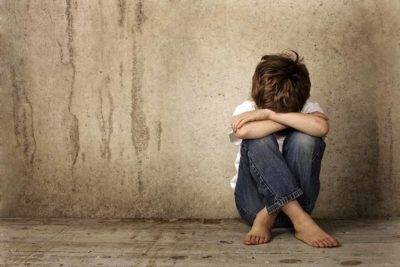What Are the Childhood Causes of Addiction?

Substance use disorders (SUDs) thus develop as the result of a complex interplay between genetics and environmental triggers. In the case of the former, genetics can play a significant role, accounting for as much as 50 percent of one’s risk factors for drug and alcohol abuse, according to a briefing by the National Council on Alcoholism and Drug Dependence. And the genetics of addiction is itself an in-depth discussion.
This article will educate readers on the childhood causes of addiction that fall within the second category, broadly termed “environment.” Knowing what these childhood causes of addiction are can be a critical help in preventing substance abuse and addressing and treating early risk factors. It can also help to build empathy and understanding for those who suffer from SUDs.
Trauma and Traumatic Stress
Trauma and traumatic stress are a common childhood cause of addiction. According to its definition by the National Child Traumatic Stress Network, childhood trauma can be either acute or chronic. Acute traumatic events are experiences that happen in a short span of time and can include the following:
- A serious injury to yourself or witnessing a serious injury to/the death of someone else
- The threat of serious injury or death to yourself or others
- A violation of personal physical integrity
With respect to the last example (violations of personal physical integrity), studies have suggested that spanking, even in the form of an open-handed slap on the buttocks or limbs, qualifies as a violation of personal physical integrity. A study published in The Journal of Family Psychology and conducted by researchers at the University of Texas at Austin looked at the effects of spanking on 160,927 children, and concluded that these amounted “to the same negative child outcomes as abuse, just to a slightly lesser degree,” in the words of the study’s lead author, Dr. Elizabeth Gershoff. (For more on childhood abuse, also see next section.)
Other examples of acute childhood trauma, according to NCTSN, are:
- School shootings
- Bullying
- Gang-related violence in the community
- Terrorist attacks
- Natural disasters (for example, earthquakes, floods or hurricanes)
- Serious accidents (for example, car or motorcycle crashes)
- Sudden or violent loss of a loved one
In addition to acute trauma, chronic traumatic stress during childhood can also give rise to addiction later in life. Longstanding exposure to war and other forms of violence, as well as ongoing physical and sexual abuse, can constitute chronic traumatic stress, by triggering intense feelings of fear, distrust, insecurity, guilt and shame.
While exposure to just one childhood trauma can increase one’s chances of developing an addiction, exposure to multiple traumatic experiences reportedly exponentially raises the likelihood of an addiction. In a study of children at the 10 middle and high schools closest to ground zero where the Twin Towers were attacked, teens and their use of alcohol and drugs were evaluated on the basis of various “trauma exposure factors.” These included:
- Knowing someone who died
- Being in fear for their own life and/or for the life of a loved one
- How near their school was to the Twin Towers
Teens with one trauma exposure factor were five times more likely to increase their substance abuse. Those with three or more trauma exposure factors were 19 times more likely to increase their substance abuse and, in turn, to show signs of addiction.
Childhood Abuse and Neglect
Childhood abuse and/or neglect in various forms (be it physical, sexual or psychological) is especially prevalent among those with SUDs and has been found to be a major contributor both to SUDs and other forms of mental illness (the presence of which can also be a risk factor for substance abuse). In a 2000 study in Europe, 100 clients in treatment for drug abuse answered questions about a history of sexual abuse prior to the age of 16. The results of that survey were as follows:
- 70 percent of the female respondents and 56 percent of the male respondents reported having been sexually abused as children
- 40 percent of the male respondents and 50 percent of the female respondents reported a history of severe sexual abuse, meaning sexual intercourse
- More than 40 percent reported a history of physical abuse
The researchers in the same study found a correlation between “especially severe sexual abuse” and “abuse of hard illegal drugs.” In the group of sexually abused respondents, the researchers also found significantly more psychiatric symptoms, such as “autoaggressive and suicidal behavior, social isolation, reduced emotional binding to others, tendency to be persistently victimized, prostitution and violence against others.” Many of these same symptoms, the researchers added, are “not only characteristic of addiction but can be found also in other psychiatric diseases such as borderline and eating disorder.”
In other research at the University of Texas, researchers over the course of three and a half years followed 19 teens who had experienced abuse and maltreatment (but did not have a current psychiatric disorder at the start of the study). Every six months the teens were evaluated on the basis of psychiatric criteria for various mental illnesses, including depression and SUDs. By the end of the study, “nearly half of the maltreated children had either a diagnosable drug problem, or depression, or both.” That was three times higher than the rate seen in the control group.

